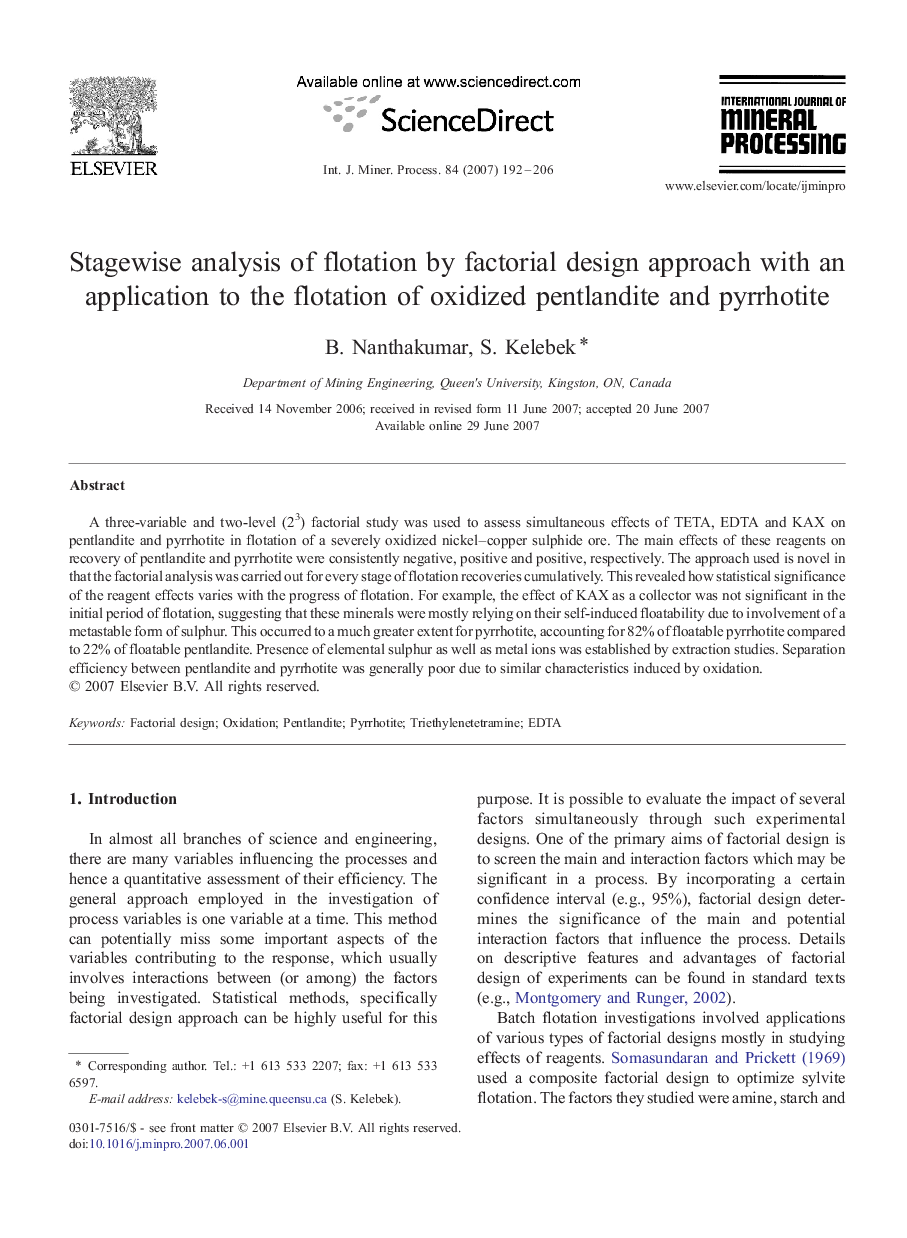| Article ID | Journal | Published Year | Pages | File Type |
|---|---|---|---|---|
| 214440 | International Journal of Mineral Processing | 2007 | 15 Pages |
A three-variable and two-level (23) factorial study was used to assess simultaneous effects of TETA, EDTA and KAX on pentlandite and pyrrhotite in flotation of a severely oxidized nickel–copper sulphide ore. The main effects of these reagents on recovery of pentlandite and pyrrhotite were consistently negative, positive and positive, respectively. The approach used is novel in that the factorial analysis was carried out for every stage of flotation recoveries cumulatively. This revealed how statistical significance of the reagent effects varies with the progress of flotation. For example, the effect of KAX as a collector was not significant in the initial period of flotation, suggesting that these minerals were mostly relying on their self-induced floatability due to involvement of a metastable form of sulphur. This occurred to a much greater extent for pyrrhotite, accounting for 82% of floatable pyrrhotite compared to 22% of floatable pentlandite. Presence of elemental sulphur as well as metal ions was established by extraction studies. Separation efficiency between pentlandite and pyrrhotite was generally poor due to similar characteristics induced by oxidation.
